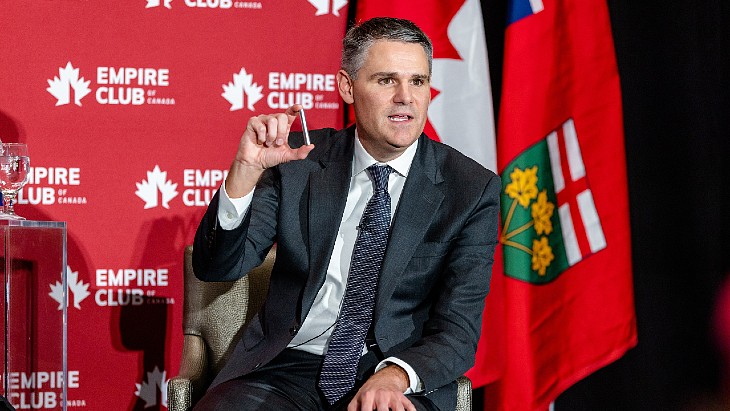Slovakia's SMR timescales outlined as Project Phoenix gets under way
.jpg)
Project Phoenix was announced by US Special Presidential Envoy for Climate John Kerry (pictured above) at the COP27 climate conference in 2022 and aims to support energy security and climate goals by creating pathways for coal-to-SMR power plant conversions while retaining local jobs through workforce retraining. The first recipients, announced in September last year, were the Czech Republic, Poland and Slovakia, with Slovenia added earlier this month.
Slovenské elektrárne has now announced that staff from Project Phoenix implementation partners, Sargent & Lundy, have visited Slovakia to carry out the initial phase of a field survey of sites for the feasibility study on the construction of SMRs in the country. They visited Slovenské elektrárne's Bohunice and Mochovce nuclear power plants and the Nováky and Vojany coal-fired plants.
The study begins with rating/excluding sites against serious constraints such as "seismicity, unsuitability of the geological subsoil or surroundings, lack of cooling water. This is followed by a survey of suitable sites and selection of the most suitable ones. In the next phase, the most appropriate SMR technologies for each selected site are assessed. Finally, a licensing plan and a capital cost analysis of the alternatives is prepared".
The analysis will also factor in the purpose of the SMR, such as electricity, heating, cogeneration and existing infrastructure and also "other socio-economic and environmental factors that may influence the final choice of sites".
According to Slovenské elektrárne, the aim is to complete the feasibility study in 2025, with the initial SMR design and licensing process running from 2026 to 2029, with procurement of major components from 2030 to 2033 and "implementation project, construction, commissioning" in 2035.
The Project Phoenix grant application was made by Slovenské elektrárne with the Slovak Economy Ministry, the Nuclear Regulatory Authority, the Slovak University of Technology, US Steel Košice and the Slovak Power Transmission System, VUJE. The aim is to help the country's transition from coal to nuclear energy "in a manner that prioritises nuclear safety, non-proliferation, security of energy supply, and sound financial considerations from the outset".
Slovenské elektrárne adds that it sees the project as a good way to develop its know-how: "Slovenské elektrárne has extensive experience in the field of nuclear energy. We are one of the first countries to use nuclear energy for peaceful purposes. We also must extend our knowledge in the field of SMRs."
Slovakia currently has five nuclear reactors generating about half its electricity, with one more reactor under construction. The first two, at Bohunice, went into commercial operation in 1984 and 1985 respectively, while Mochovce 1 and 2 were connected to the grid in 1998 and 1999, respectively. Construction of Mochovce 3 and 4 began in 1986 but was halted in 1992. It was later restarted and Mochovce 3 entered service in 2023, with work continuing on Mochovce 4.
_92619.jpg)

_84504.jpg)







_88592.jpg)

